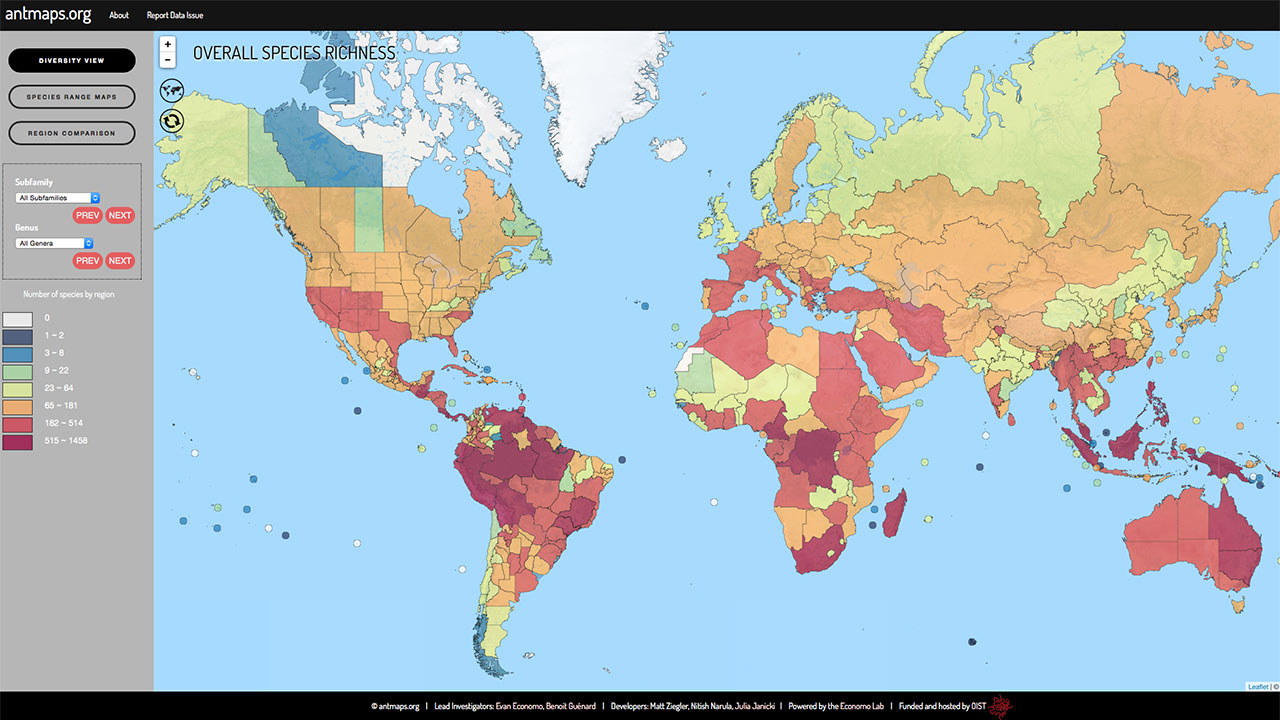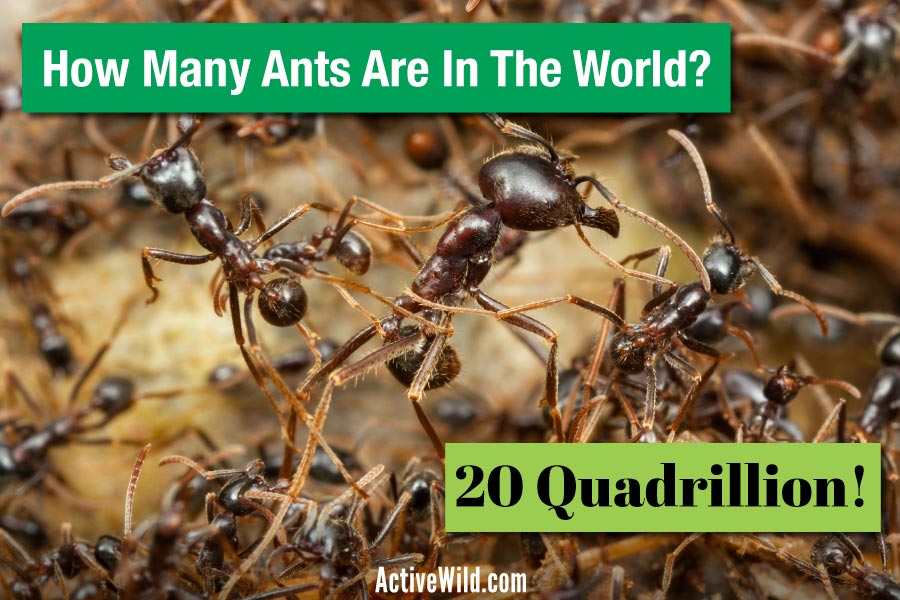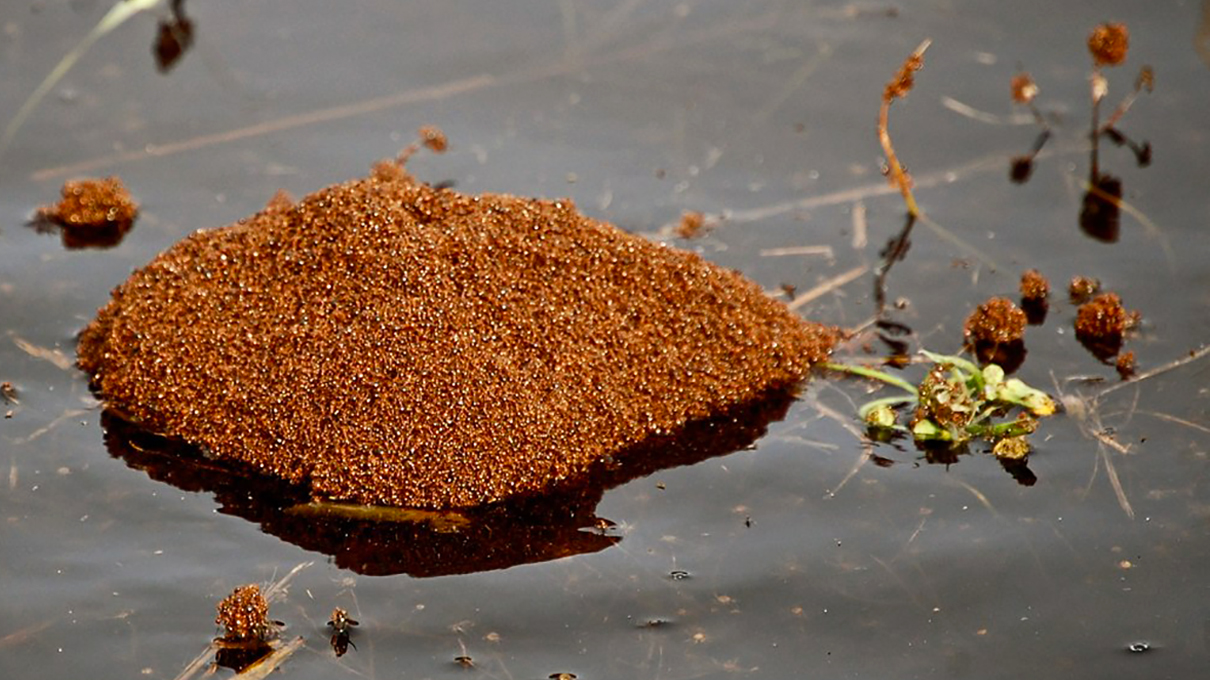We humans like to flatter ourselves that we rule the Earth. After all there are eight billion of us spread across the globe and our cities, highways and other structures dominate the surface of the planet. Deep down inside however we know that’s not true, we know that scurrying beneath our feet, or hiding just out of sight, or even buzzing in the air around us are untold trillions of little creatures, insects. They were here hundreds of millions of years before us and they’ll be here hundreds of millions of years after we’re gone.

O’k so insects outnumber us, just take a walk outside and look around and you can see that, insects are pretty much everywhere you look. But just how many insects there are would be enormously difficult thing to calculate. Just think of all of the different kinds of insects there are, all the different environments in which they live, the different ways in which they live.

That amount of work would take more than the life span of any single naturalist or small group of naturalists. Recently however a team of entomologists, that’s the formal name for scientists who study insects, from the University of Hong Kong did just that for at least one very important family of insects, the ants and the answer is simply mind blowing.

Now to be honest the entomologists did not actually do any field research themselves. Instead what they did was to compile the results of 489 papers written about ants by scientists from all over the world and over the last hundred years dealing with hundreds of different species of ants. The entomologists who carried out those 489 studies may have had to get down on the ground and estimate the number of ants in each square meter of ground from hundreds of locals spread around the world but the researchers in Hong Kong simply used that data to get an estimate for the total number of ants living here on Earth. 20 Quadrillion, that’s 20,000 trillion.

To put it another way, that’s about 2.5 million ants for every person alive today, and although ants may be small, that means that when put together they would outweigh all of us. So try to remember that the next time you’re walking down the sidewalk and you see an ant’s nest sticking out of a crack in the cement with a lot of ants around the entrance. If you’re tempted to step on the ants just because you’re big and strong and they’re not, don’t forget they have a lot of friends and in the long run they’re going to outlast you and all of us.

As we all know ants are social insects, with many thousands living together in a nest that’s ruled by a single queen who produces all of the eggs from which the many worker ants develop. And in some species the nests have been discovered to carry out some rather amazing, and intelligent construction projects.

Leaf cutter ants for example are known to grow, tend and harvest a form of fungi in their nest underground that they use for their main source of food. Several species that don’t like the sunshine use leafs and other ground litter to build covered highways to their sources of food. And the fire ants of the American southeast can avoid being killed during heavy, flooding rains by literally building rafts out of their own bodies.

Fire ants may be a considerable pest in the states along the Gulf Coast of the United States but they are also one of the most highly organized of all the social insects. So synchronized are their movements that in large numbers they seem to flow more like a liquid than as a collection of individual creatures. So coordinated are the ants that their behavior has even been given the name ‘active matter’.

Now in a series of two articles, one in the journal Bioinspiration and Biomimetics while the second has been accepted at the Physical Review – Fluids (There’s a combination for you) Dr. Hungtang Ko, who recently moved to Princeton University after several years as a graduate student at Georgia Tech, has described some of the details of how fire ants not only build their rafts, but actually control them.

Right from the start the ant’s actions show a considerable degree of intelligence, at the first sign of rising water levels they begin to gather up the nest’s eggs in order to preserve the next generation. Once the nest is flooded the individual ants don’t swim toward each other but rather just allow the ‘cheerios effect’ to bring them together. The cheerios effect is the name given to the way that surface tension causes small objects floating in water to clump together, like the last few cheerios in a bowl of milk. The skin of each individual ant is water repellant to a small degree but this property increases as more ants join the raft, grabbing a hold of each other with their mandibles and claws. Every ant seems to know what it is supposed to do so the raft can be assembled in about 100 seconds, even storing the precious eggs onboard.

If the floodwaters are quiet, with little or no movement or turbulence, the ants maintain their raft in a flat circular shape but if the water is flowing the ants can actually streamline the shape of their raft to make it more stable. The ants can do this because the raft is actually constructed in two layers with the bottom layer providing stability so that the ants in the upper layer can change their positions to alter the raft’s shape.

The brainpower of each individual ant may be tiny, but studies like Dr. Ko’s provide strong evidence that collectively they are one of the most intelligent animals on this planet.
